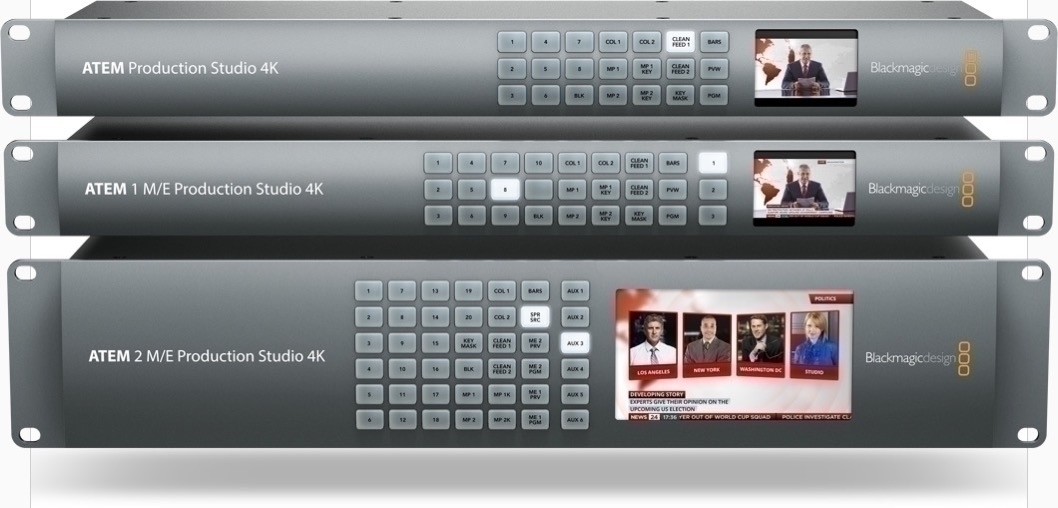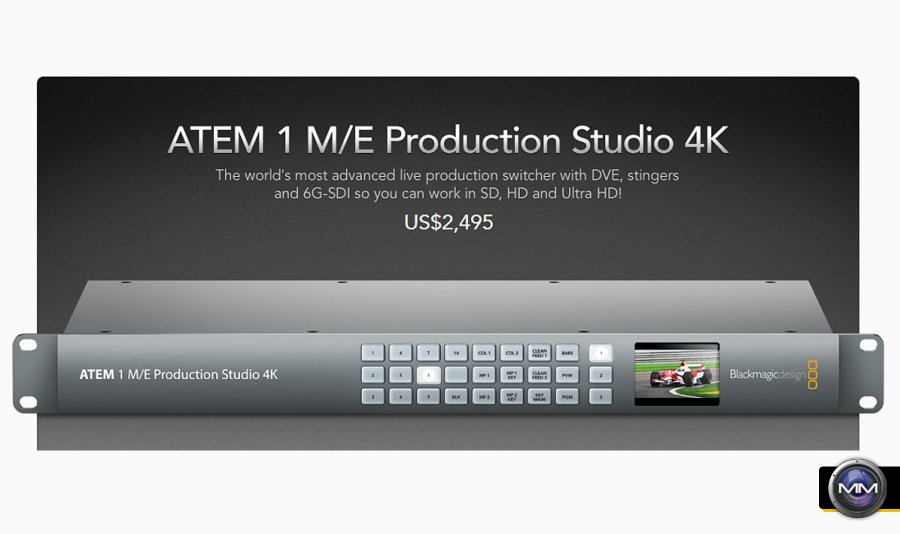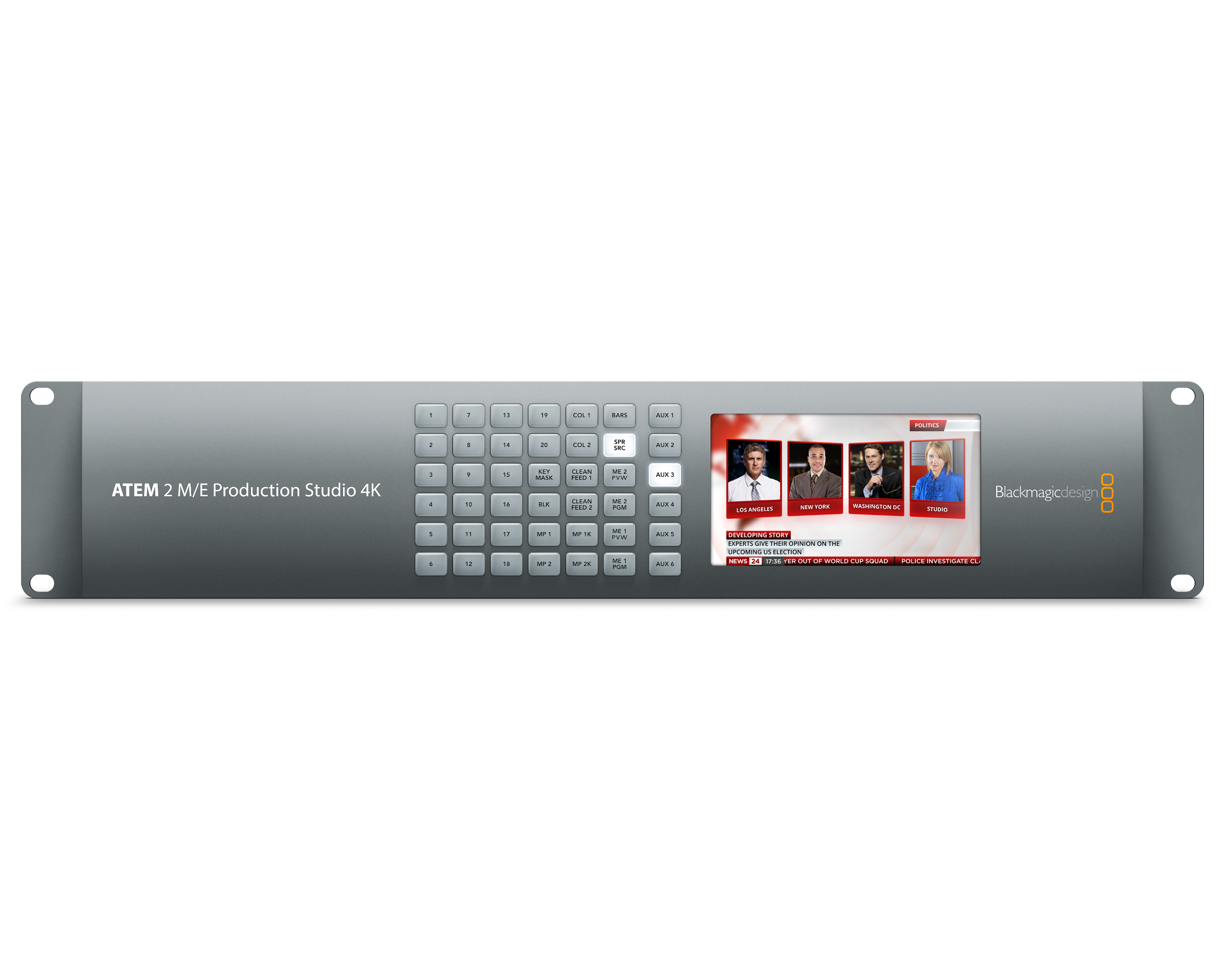

To make it easier to visualise, imagine we have a 1 M/E mixer, this would allow us to create a simple Picture-in-Picture effect, consisting of having a presenter’s resized camera feed overlaid onto a PowerPoint presentation. If you intend on compositing various layers and utilising a lot of effects in your live mix, then the more M/Es you have available in your ATEM, the more flexibility and capability you’ll have. This allows you to create various effects, layered sources etc within the additional M/Es, and then make them live by simply selecting it as a source on the main program bus. On more complex switchers it’s possible to have multiple M/Es available. Typically, you’ll have three buses, one for preview, one for program, and one for compositing called key – this is what we would call a 1 M/E (short for Mix/Effect) switcher.

The most basic part of a switcher is a bus, usually a row of physical buttons on the mixer that each correlate to one of the multiple video inputs. It’s always advisable to have more outputs than you think you initially require. If you’re looking at an ATEM model that has fewer physical outputs than what you were needing, then you can always increase the flexibility of the system by incorporating one of the Blackmagic Smart VideoHubs into your setup. The auxiliary output can be configured to output a clean feed should the ATEM you want to use lack a physical clean output.

This is the main program out without the downstream keyers (more on that below), primarily used for outputting your show without graphics and text overlaid. Some of the ATEM models also have physical outputs dedicated to outputting what’s called a clean feed. You’ll then want to account for the different recording devices and whether you’ll be running multiple screens, projectors, or auxiliary feeds to certain destinations. You’ll ideally want to be able to route a return program feed to each of your cameras, as this is how you’ll be able to make use of remote camera control, tally, and talkback with Blackmagic cameras - whilst also offering the operator the ability of viewing the program feed.

The outputs are where you really need to give it more thought. The amount of inputs is straight forward to calculate, you just need to know the amount of video sources you’re intending to run in your production, and this could be cameras, playback devices (such as the HyperDeck range), or even a laptop etc. Connectivity is going to be a big factor in selecting the right ATEM.


 0 kommentar(er)
0 kommentar(er)
